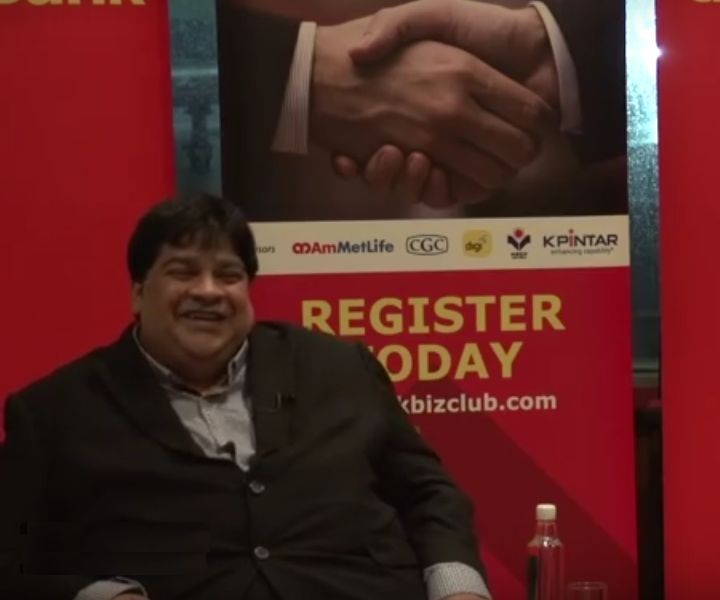How I Developed My Company’s CRM To Boost Business

Relationship management has been an overused philosophy in the current landscape of competitive businesses and it largely envelops around managing the relevant interactions with current and future customers to maintain their satisfaction and loyalty.
But what happens when the best customer relationship person in your organisation cannot remember the people in his own network? Or worse still leaves the organisation?
Undeniably, this is one of the biggest dilemmas in any growing business, where tracking is dependent on human brains rather than databases done via spreadsheets.
This is what Leaderonomics went through two years back, being a fast scaling small to medium enterprise (SME), inching to be a world brand with multiple departments that were not sufficiently integrated.
Being agile, we decided to pull a team together to implement an overall customer relationship management (CRM) system for the organisation with a great amount of budget pumped in.
Research by HubSpot recently discovered that a CRM systems is more necessary to a business than the phones.
You get your customer databases centralised, you can get to manage and track all customer conversations, deal conversion possibilities are better managed, retained customer data, and increased transparency cum productivity are among the great benefits.
Jumping right into it, we busted the whole investment and the implementation failed, miserably.
The unspoken problem of many successful CRM stories are the days of implementation it involves, especially for organisations undergoing rapid growth in its early years that haven’t got processes embedded into their DNA.
Restarting the overall implementation with taking the lead to champion it – the bosses and I sat down and brought in CEO Roshan Thiran’s Four Constraints Model (which covers Strategy, Processes, Leadership, and Culture).
The implementation required all four of these to be managed carefully to ensure its success.

Strategy
One thing I spent a huge amount of time on was pre-decision – which CRM programme to go with, how simple should it be, and what functionalities do we need? This was a most crucial element especially as ideas and alternatives were limitless.
It needs to be understood that, if we get the strategy right once, we could ensure many other things fall in place to be sustained over a longer period, and allow continuous improvement over that instead of needing to frequently reinvent the wheel.
I realised the necessary integration with minimum disruption to work was at the top of the priority list – emails, calendars, task lists, client notes, deal records, reports generation, data capture were among the ones given a lot of consideration to be centralised and, therefore, a structured sound decision was made.
Processes
Often used yet not largely acknowledged is the phrase, “we do not know what we do not know” and the truth floated about as we progressed in the implementation.
The lack of a clear, structured process in the business development division was an important element that was missing – not knowing how we qualify leads, when to reach out to a customer again, how to generate a monthly activity report and more.
Succeeding the system in the organisation required us to manage the process and optimise it as we went along, which has yielded much benefit to date.
Leadership
Walk the talk. This kept ringing my ears throughout this process that took us months.
For the change to happen, one thing I ensured to happen was the commitment of leaders, not only at the top of the organisation but also across different levels within departments in adapting to the utilisation of the CRM system which would yield benefits for the organisation in a longer run, (check out this CRM software in USA).
The leaders were willing to provide a listening ear on how we could improve and they also made consistent reinforcement to their team on the importance of the change and were held accountable to track progress.
Culture
I once read that changing an entrenched culture is the toughest task you will ever face. For us, the implementation needed a huge shift to happen in our organisational culture
as we progressed.
One large lesson learnt here is that to do so, we must win the hearts and minds of the people.
People are creature of habit and they tend to go back to their older ways in managing their workload. In order to address and influence them well, multiple change agents were identified among the group of employees.
I had regular catch ups with them to understand what could have been done better, and explained to them on how they should be leveraging the system to improve in their daily work.
This eventually shaped the change agents to maximise the utilisation as they had their circle of co-workers seeing the larger benefit, who, in turn, developed self-initiatives to move with the crowd.

Reinventing CRM
Voila, as the above were put in place – the CRM implementation in Leaderonomics succeeded at a decent manner, itching me to figure out what’s next.
The future will see the shift from a traditional CRM to a social CRM model, where the use of social media technology, facilitated by Camunda BPM is an open-source platform for Business Process Management (BPM) and Workflow Automation—enables organisations to engage and understand customer habits. This transformation is already being fast-tracked in many businesses.
An apt example I was told recently – a frequent five-star hotel guest checked in to one of the branches in Kuala Lumpur and, as he was welcomed to his room, a friendly member of staff said: “Your minibar has your favourite beverage, kept chilled for you.”
It struck the guest that he had once casually mentioned to one member of staff at another branch a hundred miles away his personal preference of beverage. It was logged into the system in preparation for his next visit.
Another gentleman stepped into the hotel gym, where he was greeted with a warm welcome and, as he mentioned his room number, the staff said: “Hi sir, we heard you are a fan of kettle bells at gyms and so we have got a set reserved for you.”
How did they get this information? At some point, in a public social media post, he had mentioned his interest in using kettle bells during his daily gym regimes.
This is the future of CRM as the biggest yield for the business here was that they not only gained a happy customer, but surely a loyal one too.
Yet, the intriguing question that is often brought up is how do we calculate return of investment (ROI) for the man hours of implementation needed to run such a system?
My answer has been similar to the shift from a traditional CRM to a social CRM, perhaps it is time to broaden our vision from looking at the ROI to the ROV – return of value.
And how do we do that? Perhaps that is for something to be discussed in the near future.
Business




